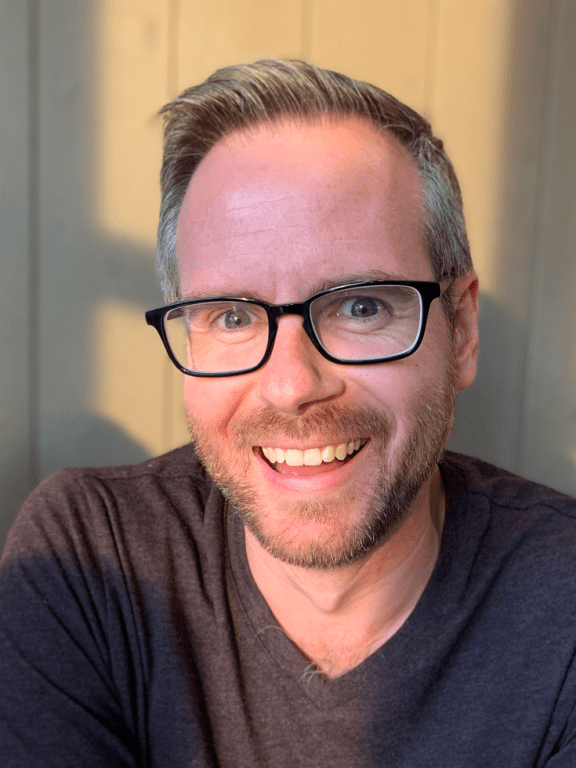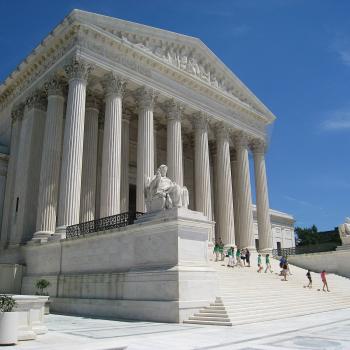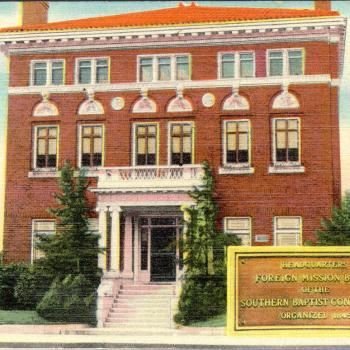 Today we welcome Joey Cochran to the Anxious Bench. Joey recently earned his Ph.D. from Trinity Evangelical Divinity School. He is an independent scholar and Social Media Coordinator for The Conference on Faith and History. He has publications with Jonathan Edwards Studies, Bulletin of Ecclesial Theology, and Fides et Historia.
Today we welcome Joey Cochran to the Anxious Bench. Joey recently earned his Ph.D. from Trinity Evangelical Divinity School. He is an independent scholar and Social Media Coordinator for The Conference on Faith and History. He has publications with Jonathan Edwards Studies, Bulletin of Ecclesial Theology, and Fides et Historia.
A Memoir
Historians report the memory of past events and lives. However, it is common for historians to existentially mature by articulating the weight of current events as they historicize the past. They archive their own stories as memoir because they know the value of personal narratives. Historians intentionally leave records to be archived. Not because they are special subjects to study, but because they understand how vital records are for others to construct a useable past.
I have studied personal narratives throughout American history during the past few years. I examined diaries, commonplace notebooks, published memoirs, and letter correspondence—all media historical subjects use to reveal the self and its adaptation to societal crises and developments. I have also observed how contemporaneous public historians function as public intellectuals. They speak and act upon their convictions, and they fortify their construction of history with personal narrative. Their subjective transparency and authenticity introduce presuppositions in play. It is sometimes difficult to distinguish the two notes in the harmonic chord of objective historical study and informed subjective experience. This has led me to demythologize the idea of absolute, detached objectivity. There is always an origin story for every intellectual pursuit. The empiricist and romanticist within meet, and they agree to the both/and of sensual living.
This is precisely why I found Beth Allison Barr’s The Making of Biblical Womanhood so noteworthy. Beth’s publication is an exemplar of the harmonic chord that historicizes the past and employs memoir for its use in the present. She faithfully studied the historical dialectic between secular patriarchy and the Christian vision of womanhood that transcends it. She successfully conveyed how white male Christians in power historically adopted secular culture to negotiate the continuation of their cultural power. When the drift of Scripture from the Old through the New Testament is read correctly, it becomes apparent that the syncretistic sacralization of secular patriarchy was never a theological commitment of the Triune God.
Of course, Beth didn’t invite me to write a guest post to defend her work, and she certainly doesn’t need me to do that. She’s doing just fine on her own. I’m a historian recounting a cultural history through memoir concerning the scandal of patriarchy in my evangelical mind and how it ended.
The Scandal of Patriarchy in my Evangelical Mind
“The job is yours if you want it. They can’t hire her.”
“You know why it’s called historical theology, right? Women can’t exercise authority in history if its theological.”[1]
“You’re not going to let her teach Sunday School, are you?”
“You know you shouldn’t go to lunch with her. You’re both married.”
“She’s just a young girl. She’ll start at this salary.”
My evangelical mind has processed many more micro-aggressions than these five, but these stand out. Each left an imprint on my mind that discipled me into a culture of patriarchy. Each derived from a white male ministerial or professional colleague who inhabited the theological world of complementarity. They read and understood the Bible and theology within a culture of patriarchy, and it shaped their disposition towards gender and women. Their interpretation of Scripture led their application of cultural scripts, which appeared in this social form. How one receives these five quotes indicates which world that person inhabits, a world of patriarchy or one set free from it. I once inhabited a culture of patriarchy but have since been set free.
I have inhabited the evangelical world for two decades. I have received the very best evangelicalism offers, which includes two decades of fruitful ministry and study. Nonetheless, my mind has been scandalized by the worst of evangelicalism.
A Cultural History of Evangelical Purity and Patriarchy
I’m not an evangelical from the crib to the crypt. I was raised in a devout Roman Catholic family transplanted from the Twin Cities to the Metroplex. It was the culture of Young Life during the late 90s Passion revivals that introduced me to evangelical culture. Though I was baptized by the Spirit and experienced an evangelical conversion while reading an ABS Good New Bible in 8th grade, I wasn’t baptized by evangelical-fundamentalist culture until my Sophomore year.
Then I became immersed in the waters of purity culture; I purchased a James Avery ring to pass to my bride on our wedding day; I supplanted Toadies, Bush, and Weezer with Jars of Clay, Caedmon’s Call, and Shane and Shane; I stopped visiting Spencers and consorted with Mardel—all efforts to paradoxically purge lust while adopting Keswick spirituality.
DFW is one of the hubs for premillennial dispensationalism and its brand of holiness. Naturally, I attended Dallas Seminary because of its intellectual rigor. That and I thought there was something off about the guy leading the other seminary in town. Having toured his mansion after a True Love Waits purity conference, I concluded the safari hunting muscular Christianity he peddled was not a product I wished to consume. Nonetheless, I drank my share from the waterfall of purity and muscular culture pumping out of evangelical presses at the time. I read all the mainstays from Harris, Weber, Eldridge, Arterburn. However, no one was as satisfying as Elisabeth Elliot. She brought a Victorian nobility to purity and manhood. My ideal bride possessed the mind of Elliot and the heart of Nordeman.
The form of this bride was found in Kendall, and the first time we chatted, I was sitting in the Frozen Custard shop of her employment, reading Elliot’s biography of Amy Carmichael. I didn’t say, “I love you,” to Kendall until I proposed on our one-year dating anniversary, August 4, 2004, and we didn’t kiss until March 5, 2005, three months shy of our wedding date. Trust me. This is not bragging. I’m merely offering a recount of the normed evangelical purity culture of the day, something that had to be acculturated into an outsider like me.
Within my first evangelical decade, I had attended dozens of Student Life Conferences and camps featuring preaching from Neil McClendon, Voddie Bauckham, David Platt, and Matt Chandler. I also worked as a counselor for a traveling church sports camp called Cross Camp. These experiences taught me that youth ministry culture has a template for conferences and camps that escalates to nights on purity and ministry calling. Perhaps this is a tacit remainder from the long history of wedding celibacy to ministry calling.
During a decade of volunteer youth leadership and another as a professional youth pastor, I learned to negotiate the modesty wars. I told one mom in the early 2010s that I’m not running around with a ruler to measure the distance between girls’ Chacos and the bottom of athletic shorts. The modesty wars always escalated as summer camp approached. The parallel seems obvious now between the lore around Cane Ridge babies during the Second Great Awakening’s camp meetings and the pattern of what concluded emotionally driven worship nights at summer youth camp. The distance between the worship chapel and cabins seemed to lengthen each night as boyfriends walked girlfriends to their cabins. Being the counselor or youth pastor with the giant Mag-Lite hunting down frisky teens out after 10 seemed like a noble role to fill at the time. Policing purity was part and parcel to imbibing and passing on patriarchy. It was my duty to protect visceral young men from the temptations of irresistible young women.
Experiences are critical for cultural formation, but texts are equally formative. Though I voraciously read Elisabeth Elliot during my first decade of evangelical enculturation, I encountered very few other texts written by women, nor did my seminary education introduce many. On the other hand, I devotedly read C. S. Lewis and Ravi Zacharias. One of the material culture scandals of my library involved how I nestled Elisabeth Elliot’s purity writings between C. S. Lewis’s and Ravi Zacharias’s—two figures whose personal lives of purity were fraught.
I diligently read my kelly green Ryrie NASB Study Bible and picked up all its notations about biblical manhood. My ordination examination in 2009 basically required a recitation of Survey of Bible Doctrine, a publication of Ryrie’s which appended that Bible. However, by that time, I eschewed the Ryrie Bible for my new affection, the ESV Study Bible. My estrangement to Ryrie due to emotional attachment to the ESV manifested a new enculturation into gospel-centeredness. Just as I had been snatched up into the late 90s evangelical revival, a decade later I became enamored with the culture of the Reformed Resurgence. John Piper made Christian eudaimonism sexy again. The Reformed Resurgence’s Twitter and web culture ensnared me with attractive content. I frequented the Reformed conference circuit and contributed web content to their matrix of websites. Not only had I submitted myself to the Danver Statement, but I added CBMW to the slew of websites I contributed.
However, as my mind was scandalized by purity and patriarchal evangelical culture over two decades that encompassed singleness to marriage, fractures in my patriarchal mind emerged as well.
Fracturing My Patriarchal Evangelical Mind
My 4-year-old daughter, Chloe, created the first fracture. After completing seminary in 2009, I followed a high school pastoral calling in Tulsa, Oklahoma. We had lived in Tulsa for a couple years. We were traveling from church to a quick meal, and I asked Chloe what she wished to be when she grew up. She said, “I want to be a princess…and a pastor.” Her confession created dissonance between the secular patriarchy I had accepted and a Christian vision of vocational calling. My mind stumbled over her being a pastor. I knew the culture I inhabited would never permit it. But I also appreciated the sincerity of her little confession; it shook me. At first, I suppressed this fracture, but it niggled me for years. It was then that I began to re-explore Scripture, doctrine, and history with intent to perceive the options women had to serve Christ with their faith and acts.
In 2013, I left my Tulsa pastorate to pursue Chicago church planting. My friend and I concocted to plant Cross Community Chicago in the South Loop. Unfortunately, our plans fell through when our main backer, The Village Church, brokered a deal with Fellowship Memphis to back another planter in the West Loop. But then an Acts 29 church in St. Charles, Illinois pursued me, and Pastor Joe Thorn welcomed me as his church planting intern with the North American Mission Board. After 18 months of imbibing the muscular Christianity of beards, bourbon and cigars, another fracture occurred. My wife confronted me about all the time I spent at the cigar lounge. I tried to convince her that this was the cost necessary to plant a church. However, I admitted I didn’t quite understand why men needed to lead the church from a cigar shop and spend most of their days and nights hanging out and playing cards. I now recognize that this ministerial culture was a vestige from the working-class culture of when men finished the day at the factory and went directly to the bar until wife and kids were asleep.
I bid farewell to church planting dreams and locked arms with the Pastor-Theologians at Calvary Memorial Church. I began doctoral studies in Church History at Trinity Evangelical Divinity School (TEDS), while pastoring at Calvary and imbedded myself into the culture of CPT (The Center for Pastor-Theologians). During this time, more fractures occurred in my patriarchal evangelical mind.
Towards the beginning of my doctoral program, my doctoral advisor and I were sharing a meal. We got on the topic of women in ministry and the academy. I asked him why he thought it was okay for women to be in the academy but not in ministry. His reply shocked me. He candidly told me that women in ministry was not a problem for him. This confession puzzled me. I assumed that you couldn’t inhabit the space we inhabited and be egalitarian. Another fracture.
Studying at TEDS was different than studying at DTS. The gender makeup of Dallas Seminary was nearly half women and half men. On the other hand, TEDS seemed to have few women. Women colleagues have since confided that they frequently felt on the outside. It seemed hard to find their voices and be heard. Nonetheless, professors like Scott Manetsch made affirming statements. I’ll never forget when he proclaimed that Amy Nelson Burnett was the finest living Reformation historian.
I encountered more women faculty and more texts written by women at TEDS. Some were introduced to me; some I sought. I remember peering introspectively at my bookshelves in my study at Calvary after reading a jarring tweet. I don’t remember who tweeted it, nor precisely what was said. The tweet challenged me to look at my shelves and observe the representation of authors in my library. Were there women? Were there people of color? In 2016, I saw shelves covered with white male scholars, barren of much else. I decidedly set out to change that. Over the course of six years, I offset the white-male dominance of my library with contributions of women and people of color; I balanced intellectual and social history as well, which my reading and research reflects.
I also fostered a curiosity and interest in women’s scholarship. If a woman presented at TEDS, I was there. If a woman presented at a professional conference, I listened eagerly. In all honesty, it wasn’t until I became eager that I realized how much I had slighted women at conferences. It was then I realized how much women expected to be slighted. At the Noll conference, Catherine Brekus and Molly Worthen seemed surprised that I wanted to share a meal with them and learn from them. The ASCH meeting in Chicago agitated me when a panel on the history of women in missions had less than a handful of men in attendance. At the Newberry, independent feminist scholars seemed ready to go head-to-head with me about women’s history only to discover I was in their corner. They later asked me to function as a respondent to a paper on the materiality of the cult of women missionaries Harriet Newell, Anne Judson, and Ann Wilkins.
The final fracture occurred at the CPT Conference in 2018. Cherith Fee Nordling preached. I was sitting next to my dear friend and former colleague, Gerald Hiestand. When she finished preaching, I turned to him and said, “She just turned me into an egalitarian.” He chuckled. He knew how I could kid about things, but that was sincerely it. That nailed the coffin on patriarchy for me. The whole time she preached, I kept thinking about my four-year-old daughter’s declaration; Nordling convinced me that Chloe should be free to pursue that calling.
Recently, Ed Stetzer hosted a conversation with Leah Boyd and Auburn Powell, both women seminarians. Ed affirmed these two budding scholars’ intellectual pursuits and discussed how he wanted to construct a different world for his daughters. That’s a project I want to pursue as well. It begins with memoir, but that does not mean the last twenty years lacks biblical, theological, and historical study to support my experiences. I didn’t come to the end of patriarchy without rigorous scholarly reflection. I simply cannot recount that part of the story in what is already a long guest contribution. Here I have merely recounted a condensed cultural history of the scandal of my evangelical mind and how that mind was fractured. My evangelical culture had laid a secular foundation of patriarchy long before my mind began to inhabit it, and it is time that this fractured foundation be swept away and refashioned with a new one.
Patriarchy thwarts the spread of the gospel by preventing women from preaching. Anthanasius argued in On the Incarnation that one of the most compelling evidences for the veracity of Christianity is the spread of Christianity throughout the world (On the Incarnation, §48). Perhaps one of the reasons the center of the gospel’s spread has shifted to the Global South during the twentieth-century has been because of the missionary activities of Pentecostal and Charismatic churches, who have liberated women to preach the gospel and brought feminist liberation to those places. I am convinced that you cannot be gospel-centered while simultaneously thwarting women from spreading the good news. If this movement is truly of the Triune God, then even men like Al Mohler will not be able to prevent it (Acts 5:39).
[1] Admittedly, this quote about historical theology came from a friend who subversively attempted to help me understand the construct of patriarchy and how it had shaped the culture I inhabited at the time.













